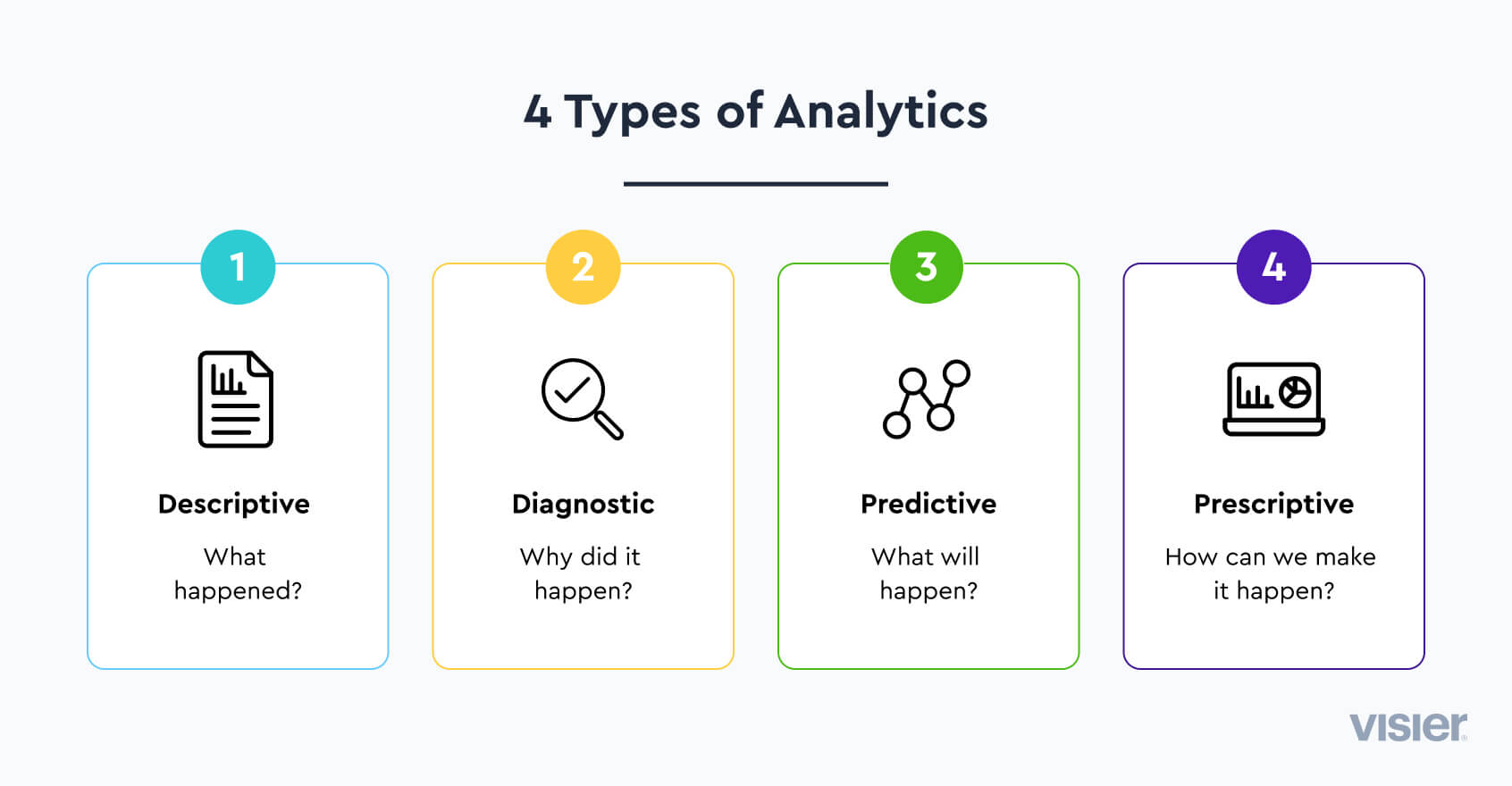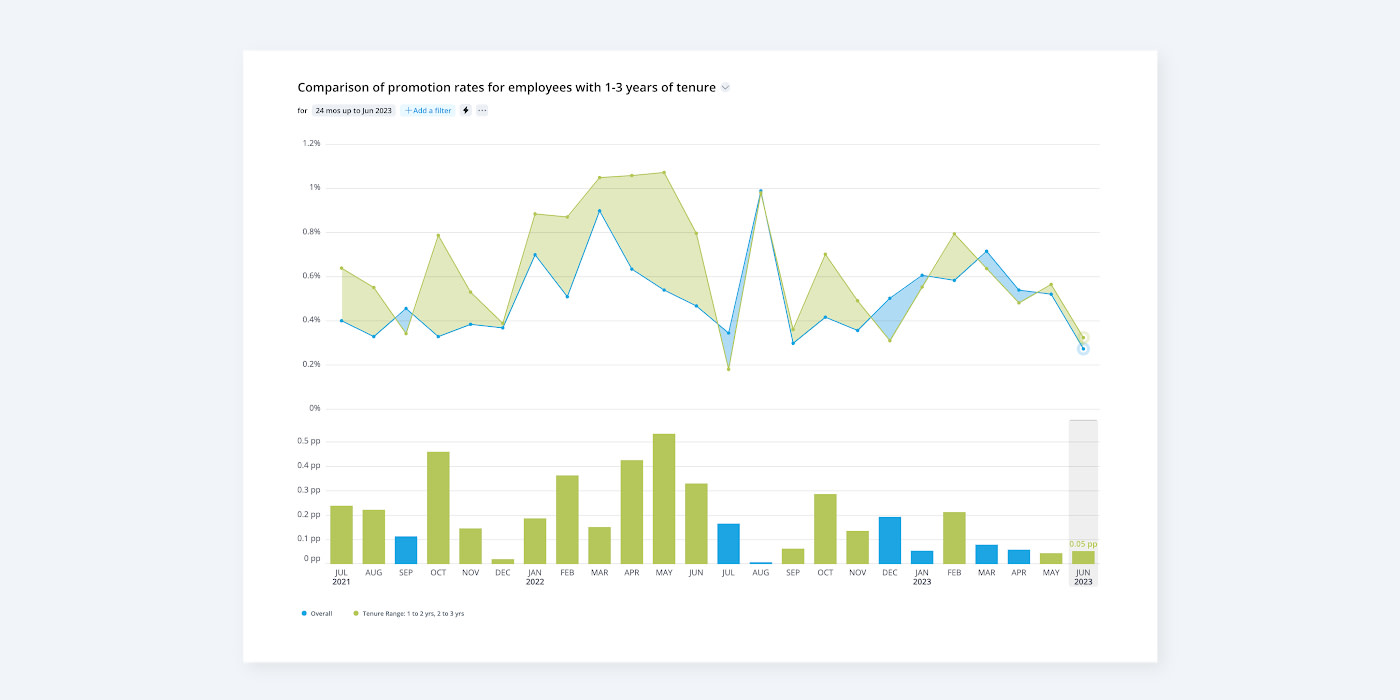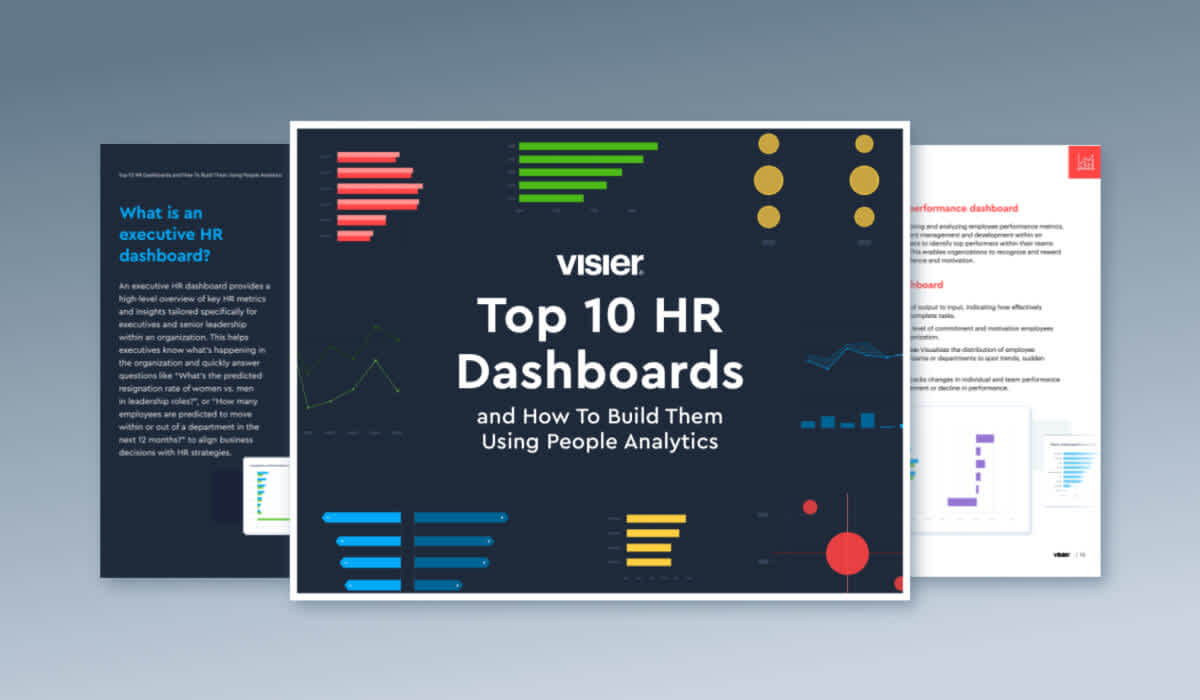8 HR Analytics Examples and Real-World Use Cases
Data is the building block of a strong HR strategy. Here are eight HR analytics examples to get you started.

One of the biggest goals for any company is to use the power of their workforce to improve their business. HR analytics aims to do just that. It helps you collect and analyze all HR data, showing you exactly where you need to improve. How you use this tool will depend on your business and your goals.
Here’s everything you need to know about it, along with some HR analytics examples that will get you on the right path from the start.

What is HR analytics?
HR analytics is the process of collecting, analyzing, and reporting on HR data to improve business outcomes and make informed decisions about your workforce. It includes all data related to your human resources, including the time to hire, time to productivity, retention, engagement, and more.
Some companies also use the terms people analytics and workforce analytics. These are similar concepts, but they’re not truly the same. As the name suggests, people analytics work with data relating to people. That can mean employees, but it can also mean those outside the company, including customers.
Workforce analytics work strictly with data related to your workforce. Employees, freelancers, gig workers, and even consultants all fit this category.
All types of analytics have a similar goal: to help businesses make data-informed decisions about their workforce and their business processes.
How to use HR analytics
There’s no single recipe for success with HR analytics. It all depends on your goals and your strategy. Here are a few steps to help you get started on the right path.
Define your goals. Don’t forget to make them SMART—specific, measurable, achievable, relevant, and time-bound. The better defined your goals, the easier it will be to succeed with HR analytics.
Collect accurate data. Gathering data for the sake of having data is pointless. Choose the data that fits with your goals, and is accurate and up-to-date. You can use both internal and external sources, automation tools, or manual collection.
Choose the tools for data analysis. Analyzing data is central to HR analytics, but doing it manually will be an impossible task for most businesses. Choose a tool that easily integrates with your systems and helps you expedite and automate the process.
Data analysis. Depending on your goals, you may use one or several types of analytics. Options include:
Predictive analytics, which guides you in forecasting future HR-related outcomes.
Prescriptive analytics, which help you understand the steps you need to take to reach a certain goal.
Diagnostic analytics, which help you understand why something happened.
Descriptive analytics, which provides a summary of historical trends to help you better understand current ones.
Encourage data-driven decisions. HR analytics can quickly become a waste of resources if you don’t use data in your decision-making process. Make data part of all your processes, from hiring to compensation and performance reviews.

8 HR analytics examples
There are many ways to use HR analytics. Whether you choose predictive or prescriptive analytics, there are several ways in which HR analytics can help you.
Examples of predictive analytics in HR
Predictive HR analytics uses statistics and historical data to help you make predictions about future trends. Here are a few examples.
Employee turnover prediction. Understanding what might drive employees to quit and when that might happen is critical for any business. HR analytics allows you to see what factors influence these decisions so that you can leverage the data and improve retention.
Performance prediction. When trying to create programs to boost performance, you need a clear understanding of what drives someone to be a top performer. With predictive HR analytics, you can see how likely your programs are to succeed and create specialized programs that will make a real impact.
Succession planning. To create a strong succession planning program, you must identify the employees most likely to make good leaders. Predictive analytics can guide you in the selection process and help you create programs that will be successful.
Recruitment success. Predicting if a candidate will succeed in a role can help you acquire better talent. Enhancing your recruitment process can improve performance and speed up productivity.
Examples of prescriptive analytics in HR
Prescriptive analytics takes predictive analytics one step further. Predictive analytics showed you what might happen. Prescriptive analytics helps you find out what you can do about it. Here are four examples.
Retention strategies. Knowing when and why employees might quit is great, but you can’t stop there if you don’t want to lose your top talent. Prescriptive analytics can show you specific retention strategies that can appeal to your employees.
Recruitment strategies. Talent acquisition is a critical process. That’s not only because of its costs but also because the success of the entire company depends on it. Prescriptive analytics can help you find strategies to attract top talent, improve the offer to acceptance rates, and more.
Diversity and inclusion initiatives. DE&I is not just a buzzword. It should be a priority for every company. Using prescriptive analytics will guide you in choosing the best DE&I initiatives based on where you are today.
Internal mobility tactics. Employees enjoy working with companies that offer them opportunities for lateral and vertical movement. With prescriptive analytics, you can discover the most effective tactics for internal mobility, mentoring, and more.

HR analytics metrics to measure
HR metrics are essential in assessing the success of any initiatives within your company. They’ll show you how well something is working and they’re a good way to spot negative trends. Here are four HR analytics metrics to track.
Time to fill. The time to fill (or to hire) is an excellent measure of how well your talent acquisition program works. The more time you need to fill a position, the more resources you waste, and the more ineffective your recruitment program is.
Employee turnover rates. This metric assesses the success of your retention strategies. It is especially valuable when using predictive HR analytics. It helps you analyze the correctness of your forecasts and adjust your processes accordingly.
Promotion and internal mobility rates. Track the rates of vertical and lateral movements within the company. The higher the number, the better your succession planning and internal mobility strategies. When employees can be promoted to new positions, it shows you have a healthy talent pipeline with plenty of development opportunities.
Diversity and inclusion metrics. You may have guessed it already, but these metrics show you the success of your DE&I initiatives. Alongside HR analytics, they can help you create a more inclusive culture, where everyone feels welcome and has equal opportunities.

Examples of companies using HR analytics
Knowing the benefits and how to use HR analytics is one thing. But seeing it in practice is always better than just going through the theory. Let’s look at some companies that have successfully implemented HR analytics.
1. eBay
One way global commerce company eBay uses HR analytics and insights is to make data-driven decisions that improve the employee experience. Scott Judd, Senior Director of People Analytics & Technology shares,
"Employees in many ways are the most important asset that any company has, and you need data to understand how you can help them stay with your company and help them improve. Analytics is a great way to drive those discussions with data and help make the future more exciting for employees and better for your clients."
By using HR analytics across the employee lifecycle, eBay can discover new ways to increase retention like promotions, compensation changes, and career development plans.
2. Providence
Providence uses HR analytics to improve hiring strategies. In a tight labor market, their team was able to use insights to accurately forecast vacancies and proactively hire the right talent to ensure they have the right people in the right roles at the right time—ultimately saving the company $3 million.
By centralizing their people and business data, Providence gained powerful, digestible insights that business leaders use to make informed hiring decisions impacting the workforce and the bottom line.
3. Protective Life
Protective Life uses HR analytics to predict employee turnover to slow resignations, measure DE&I progress, and engage business leaders beyond HR. Matthew Hamilton, VP of People Analytics & HRIS, shares,
"Getting data out into the hands of leaders and democratizing data is really important. A lot of change happens at the frontline or mid-level manager level. So it's really important to get the relevant insights into their hands so they can use the data and ultimately pull those levers of change to improve the employee experience, diversity, talent, and acquisition."
By using HR analytics and putting people insights directly in the hands of leaders, they're able to arm key decision-makers with the insights they need to impact business performance.
More about HR analytics
HR analytics tools help companies collect, analyze, and glean insights from their HR data. These are the key features to look for in an HR analytics tool.
Effective use of HR analytics and reporting within an organization helps to drive evidence-based and objective decision-making. Learn more here.
Finding and analyzing the right data using HR analytics helps companies make the right decisions for their workforce and organization. Here's everything you need to know about HR analytics.
Predictive HR analytics let you make predictions and forecasts about future performance based on historical HR data.

Get the Outsmart newsletter
You can unsubscribe at any time. For more information, check out Visier's Privacy Statement.


